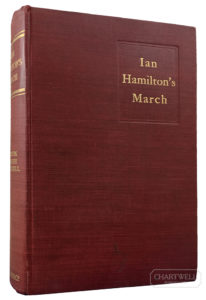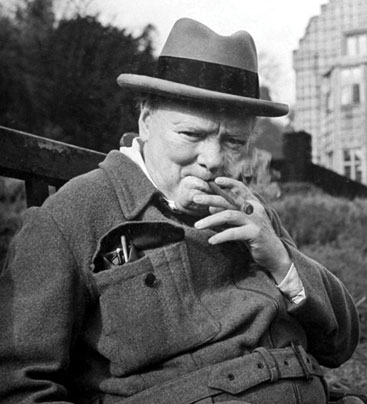CHURCHILL OUT OF HIBERNATION, WEEK 8
IAN HAMILTON’S MARCH looms next on our march-time stroll through the works of Winston Churchill. Paired with LONDON TO LADYSMITH, it is the second and final volume in Churchill’s Boer War narrative.
So, who was Ian Hamilton?
 Winston Churchill accomplished a few extraordinary things in Ian Hamilton’s March, which was published on October 12, 1900; just five months after London to Ladysmith. He managed to portray with perfect immediacy the bloody panoply of the Boer War while also conveying the inescapable, gnawing, foolhardiness of the venture. He managed to celebrate the heroism of the combatants on both sides, capturing both the English and the Boers with honor. He accomplished this by being honest about his own feelings toward what he witnessed. His observations remain unparalleled in their empathy for all concerned: an empathy overlooked over the years by those who condemn Churchill as a one-dimensional colonialist.
Winston Churchill accomplished a few extraordinary things in Ian Hamilton’s March, which was published on October 12, 1900; just five months after London to Ladysmith. He managed to portray with perfect immediacy the bloody panoply of the Boer War while also conveying the inescapable, gnawing, foolhardiness of the venture. He managed to celebrate the heroism of the combatants on both sides, capturing both the English and the Boers with honor. He accomplished this by being honest about his own feelings toward what he witnessed. His observations remain unparalleled in their empathy for all concerned: an empathy overlooked over the years by those who condemn Churchill as a one-dimensional colonialist.
Churchill was not shy about criticizing Britain’s Boer War strategy and even British fighting mettle in the wake of his widely publicized escape from the Boers. He then responded to the outcry that his criticisms had generated by rejoining the army and heading off to fight the Boers some more, battling on in South Africa for a further six months with “conspicuous gallantry,” as his friend Ian Hamilton, the Acting Adjutant General attached to the Natal Field Force, later wrote. Churchill took part in many of the fiercest final battles, as well as the relief of the city of Ladysmith, the conquering of Johannesburg and the capture of Pretoria, where he personally liberated his old POW comrades.
With the tide of the war turned, he then sailed for home on the 7th of July 1900. Ian Hamilton’s March was completed soon thereafter.
Ian Hamilton and Winston Churchill remained entwined for years after the Boer War. As commander of the Allied Mediterranean Expeditionary Force during the First World War, Hamilton was one of the generals charged with leading the ill-fated landings at Gallipoli in 1915. He refused to scapegoat Churchill for the tragic disaster that ensued.
In 1919, Churchill sold Lullenden, his much-loved first country house, to Ian Hamilton.
The two old warriors were still in close touch when Churchill returned to the Admiralty in September 1939. Hamilton lived to see Churchill become Prime Minister.
We wish you continued safety, health and Churchillian friendships.


